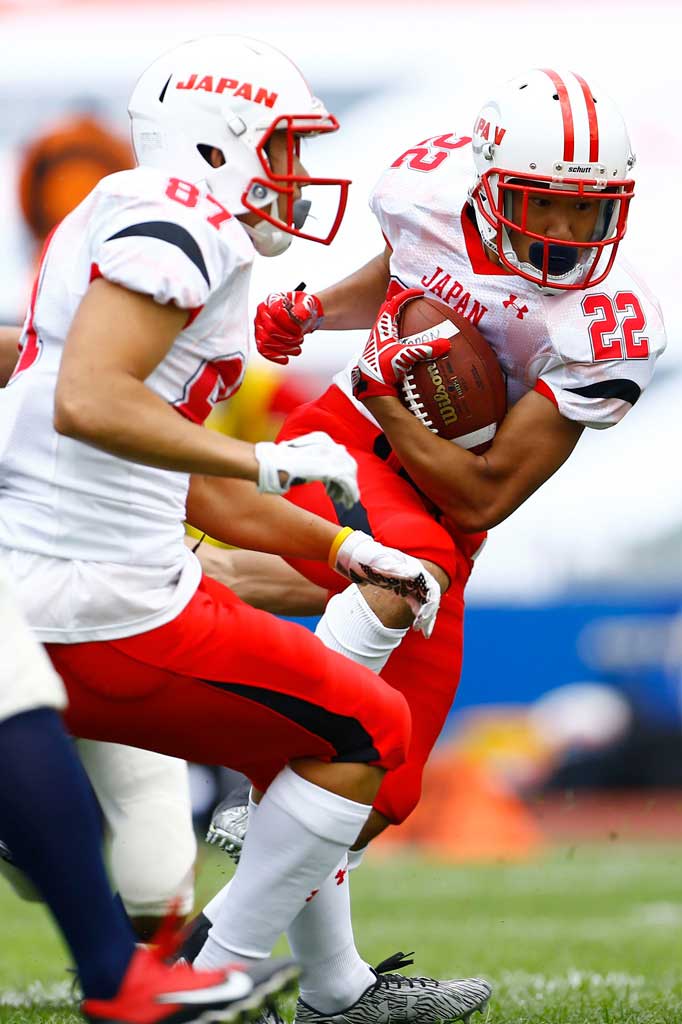
If you’ve been following along with the progression of American Football within the FISU World University Championship series over the past six years you might be wondering about the roots of the sport in Japan and its influence on the country’s sporting culture.
It was in late November of 1934 that the first official football match in Japan was held in Tokyo in a packed 20,000-strong spectator-filled Meiji Jingu Stadium. The game was a response of student-athletes at three universities coming together to compete against the Yokohama Country & Athletic Club. The students shut out the athletic club en route to a 26-0 victory.
The majority of the members of the student All-Star Team were Japanese-American students who had cut their teeth playing barefoot football, and their first American football match would bear out that Japanese-American students were indeed a force to be reckoned with. The YCAC team, meanwhile, non-American members including inexperienced French and Belgian nationals, who were overwhelmed by the energy of the student all-star team during the entire game.
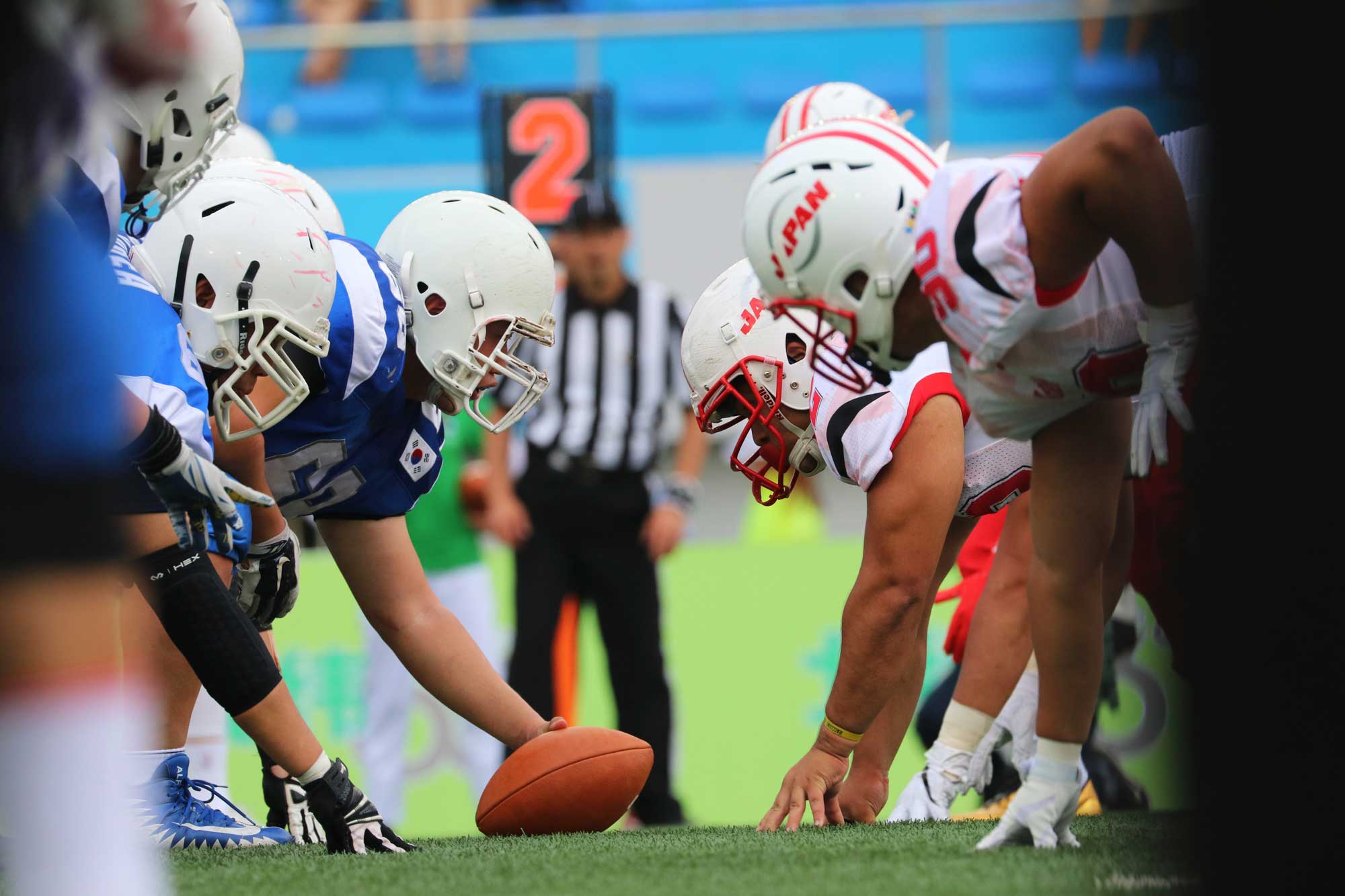 Japan takes on Korea during day one of the 2018 FISU World University American Football Championship in Harbin, China
Japan takes on Korea during day one of the 2018 FISU World University American Football Championship in Harbin, China
The first league competition of the Tokyo Collegiate Association consisted three matches in December with Rikkyo University, Meiji University, and Waseda University competing. Meiji University won two games to become the first champion.
On November 29, 1934, the first official American football match in Japan was held in Tokyo in a packed 20,000-strong spectator-filled Meiji Jingu Stadium. In response to the proposal of a certain Dr. Paul Frederick Rusch of Rikkyo University, the Tokyo Collegiate American Football Association, consisting of members from Rikkyo University, Meiji University, and Waseda University, was established.
The Tokyo all-star team of twenty-six student players including members from Keio University and Hosei University, which both had started preparing to put together a team, took on the Yokohama Country & Athletic Club (YCAC) team and earned a 26-0 shutout victory. The majority of the members of the student All-Star Team were Japanese-American students who had cut their teeth playing barefoot football, and their first American football match would bear out that Japanese-American students were indeed a force to be reckoned with.
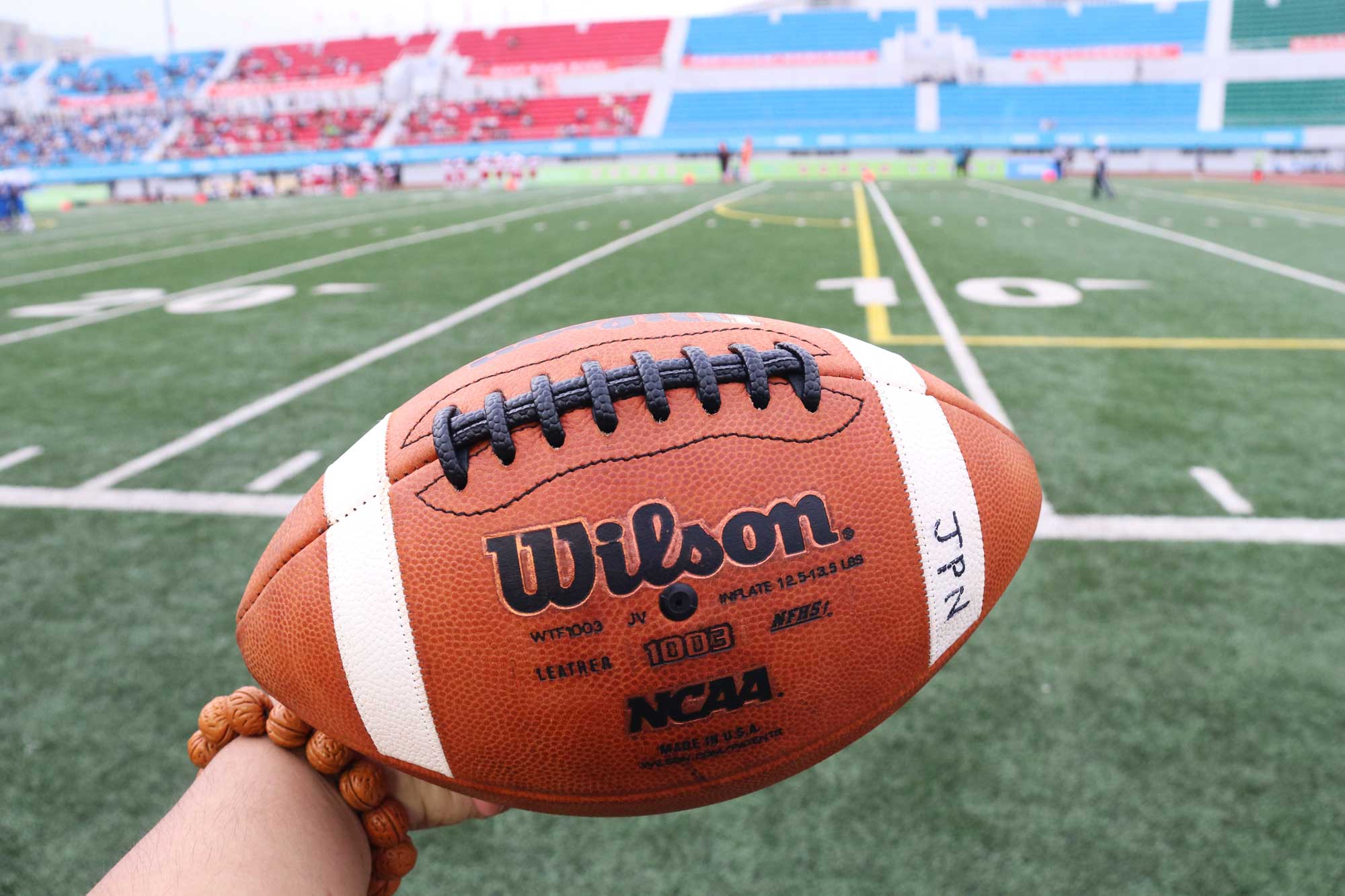 Through university sports, FISU has been helping grow American Football’s development and popularity around the globe
Through university sports, FISU has been helping grow American Football’s development and popularity around the globe
In contrast, YCAC team included elderly and non-American members including inexperienced French and Belgian nationals, who were overwhelmed by the energy of the student all-star team during the entire game.
The first league competitions of the Tokyo Collegiate Association consisted three matches in December, hosting 29 Rikkyo University players, 16 Meiji University athletes, and 21 Waseda University participants; Meiji University won two games to become the first champion.
It was in the third year of the sport in Japan that an all-Japan team travelled to the United States to test out their game on the inventors of the sport. After arriving in the mainland of America following a two-week cruise, they suffered a 6-9 loss to a southern California high school All-Star Team. On the return trip, they stopped in Honolulu where they salvaged a draw with the Roosevelt High School, the reigning Hawaiian high school championship team that year.
The sports’ comeback after the Second Great War
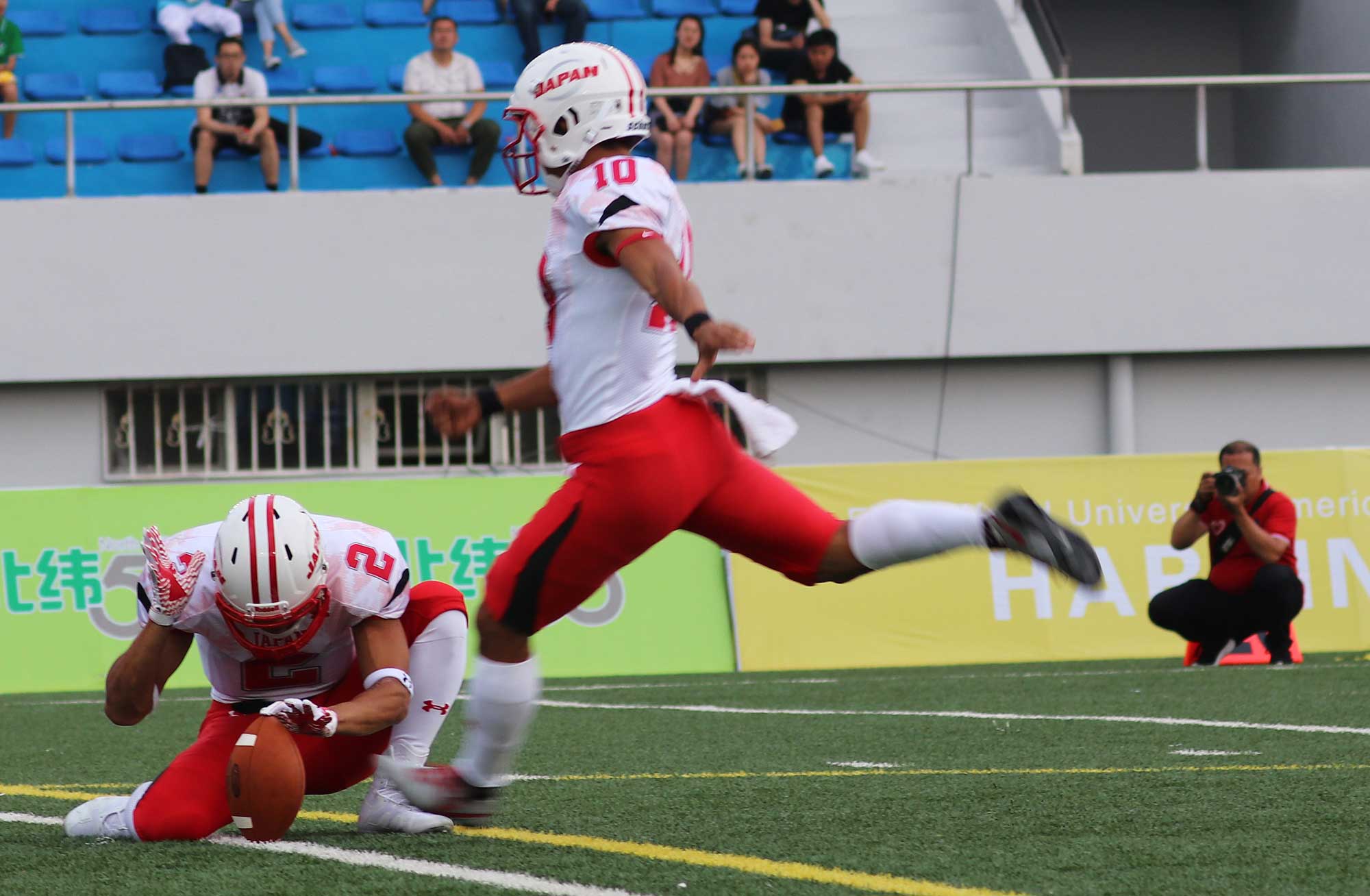
As World War II gained momentum, university sports teams were forced to disband under the instructions of the Japanese government in 1943. For the next two years until the end of the War in August 1945, all sports excluding those involving domestic combat techniques such as Judo, Kendo, and Kyudo (Japanese archery) disappeared from public view.
However, in 1946, soon after the war, American football began making a comeback with a remarkable momentum. In April 1947, Koshien Stadium hosted the Eastern Conference winner, Keio University and the Western Conference winner, Doshisha University in what was to be the first Koshien Bowl College Championship. In January of the following year, the Rice Bowl, an East- West All-Star Game series, was held at Nile Kinnick Stadium, formerly the Meiji Jingu Stadium. These two Bowl Games have continually been held for over seventy years in Japan without interruption.
Roaring ’50s
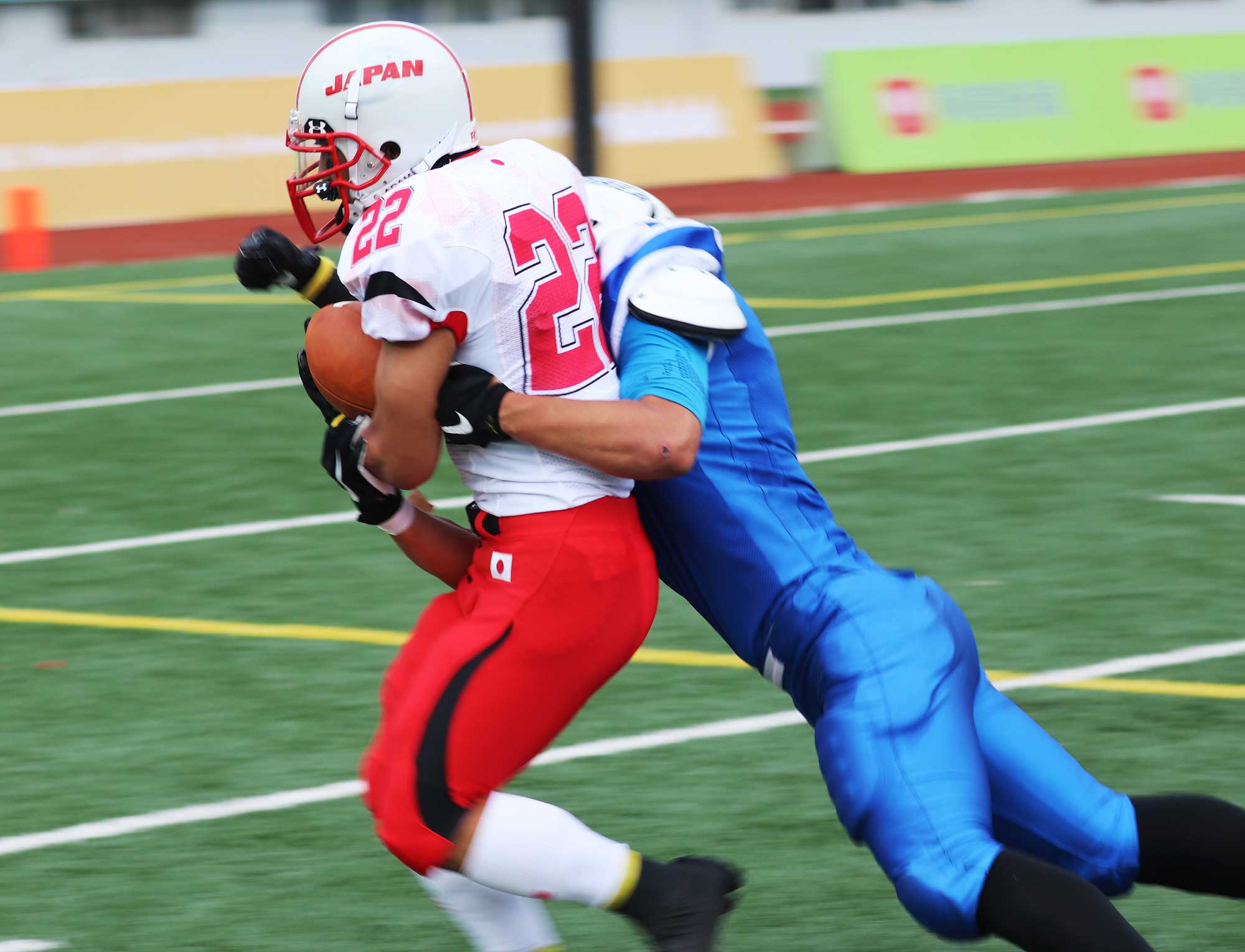
During the mid-1950s, the number of colleges participating in American football continued to gradually increase. The number of member colleges increased from nine after the end of the War to 14 in 1957, when the 12th Koshien Bowl tournament was broadcast across the country by the NHK (Japan Broadcasting Corporation).
Twenty-seven teams were formed in the five years following the total number of colleges reaching 20 in 1965. The sport’s popularity in the 1970’s kept growing among regional universities outside of Kanto (East) and Kansai (West) conferences.
Period of Growth and Transformation
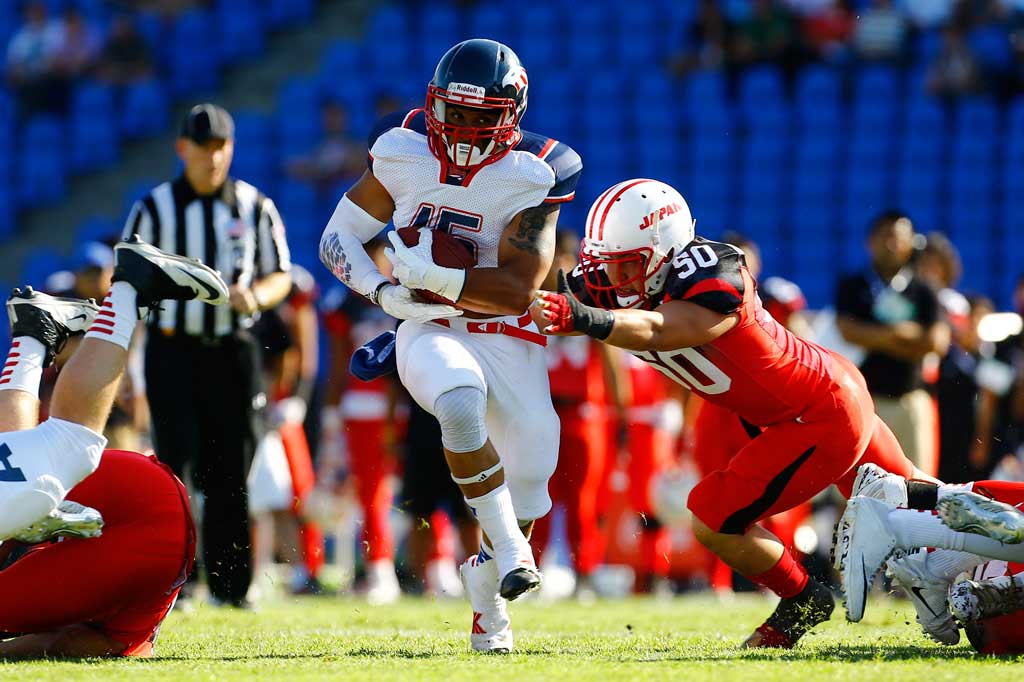 Japan takes on the USA Team at the 2nd edition of WUC American Football, with the Americans on offsense, driving deep into scoring territory
Japan takes on the USA Team at the 2nd edition of WUC American Football, with the Americans on offsense, driving deep into scoring territory
The modern football era was ushered in by a Utah State University visit to Japan in 1971. The Utah State Aggies, led by Coach Chuck Mills, was a powerful team boasting the future NFL quarterback Tony Adams.
The Aggies challenged the All-Japan Team in two matches in December after the league’s fall season, and this greatly impacted the spread of American football and technique improvements in Japan. This match was the Japanese All-Stars’ fourth match against an American team since the pre-war period. However, the game was a stark contrast to the games before as the Japanese showed significant degree of improvement to their strength and skills. After this, a number of strong teams such as the University of Hawaii, Wake Forest University, and Brigham Young University. This is the way the “College All-Japan”challenge would continue to play out.
The steady spread and improvement of American football in Japan in the 1970s attracted heightened public interest. The Japan Bowl, NCAA East and West All-Star Game was inaugurated in 1976 to commemorate American Revolution Bicentennial. While American football began to appear in advertisements, products, and movies along with regular broadcasting of NFL and NCAA matches, this period also marked the launch of specialized magazines and weekly football comic books.
Restructuring And The New Era
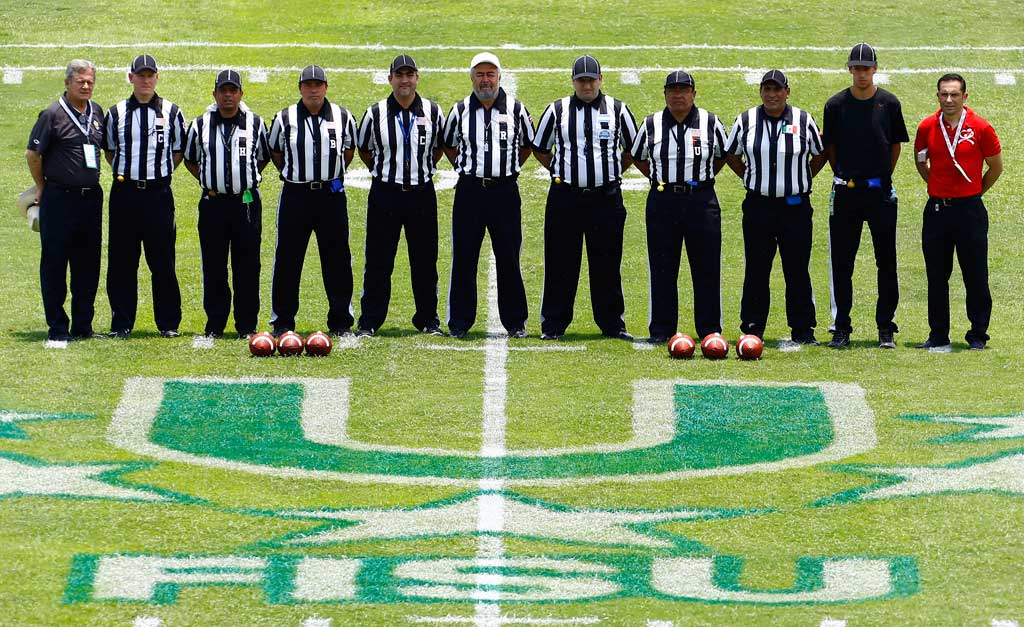
During the 1980s club teams comprised of graduate players and many corporate teams formed as the Japanese economy grew. A Collegiate American Football Federation consisting of eight districts was established in 1980 and the National Football Association (NFA) was established in 1985.
Koshien Bowl tournament time
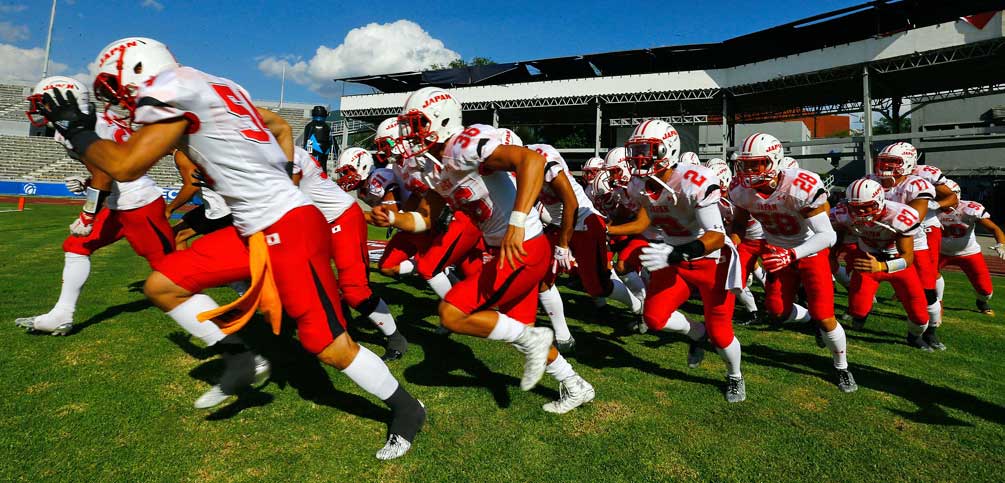 Team Japan takes the field during the 2016 WUC American Football
Team Japan takes the field during the 2016 WUC American Football
At the outset, College Champions one after another continued to take the Rice Bowl title. Following the establishment of the X-League in 1996, however, corporate or club teams with their throng of experienced and proficient players started to dominate. In 2003, after their 20th match, they managed to even up the record to a 10-10 tie. Since then, in the past fifteen games up to the tournament held in January 2018, college teams have suffered 9 consecutive defeats, with only 2 wins and 13 losses. Nevertheless, the college teams’ fighting spirit and solid performance continues to draw much fanfare every year.
The popularization of American Football during these years has to take into account the over 200 university teams competing in the Japan American Football Association in 1989, with the Association growing further to 237 member universities in 1998. These remarkable developments over the last few years mark a veritable dawn of a new era for American football that accompanies its worldwide expansion.
Japan joins the sports’ international movement afoot with FISU and the IFAF
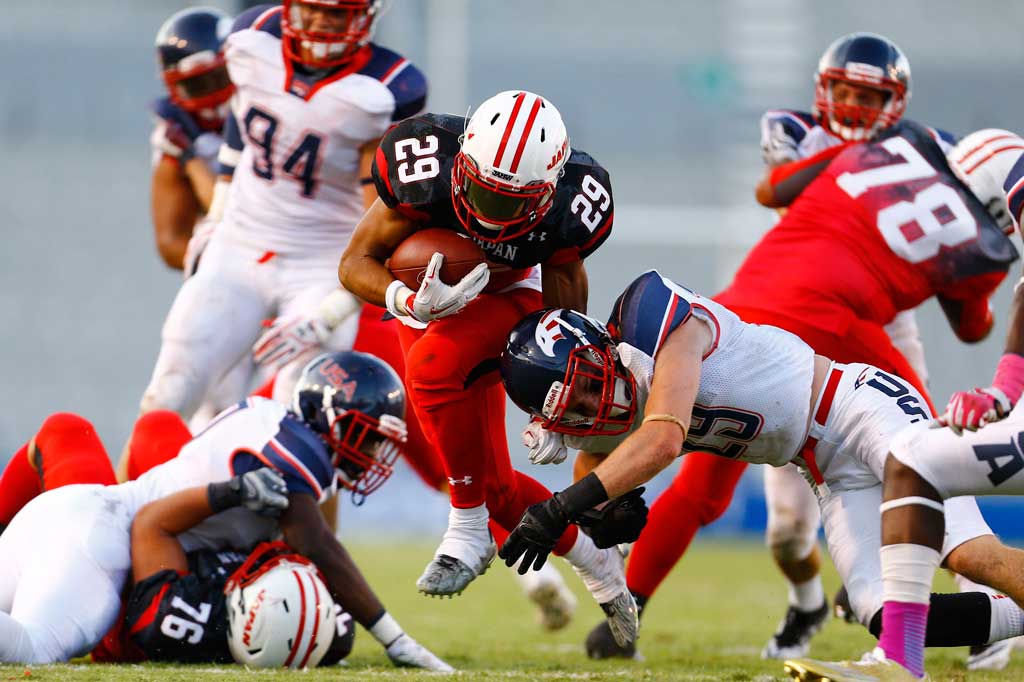 Japan on the run against the USA in the 2016 WUC American Football
Japan on the run against the USA in the 2016 WUC American Football
The World Championship of American Football has been held every four years since the year after the establishment of the International Federation of American Football (IFAF) in 1999. Japan took two consecutive titles in the first two editions of the tournament. Japan also came second, third, and second in the past three tournaments respectively, ranking second internationally after the United States.
It was in 2014 that FISU launched the World University American Football Championship with Japan finishing in second place in the first edition of this tournament, which took place in Sweden. In 2018, Japan is looking for that first elusive title and came into the 2018 tournament as the second-highest ranked university country team in the world. Japan’s stiffest competition should come against the three-time defending world university champions Mexico and the USA in this year’s five-team tournament.




